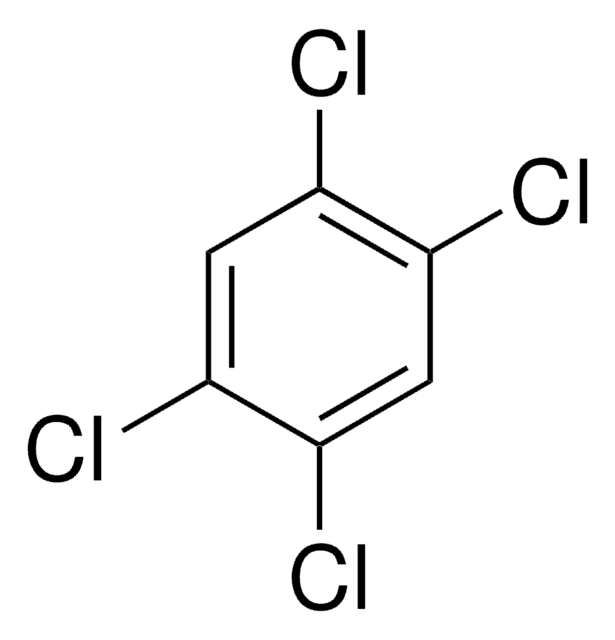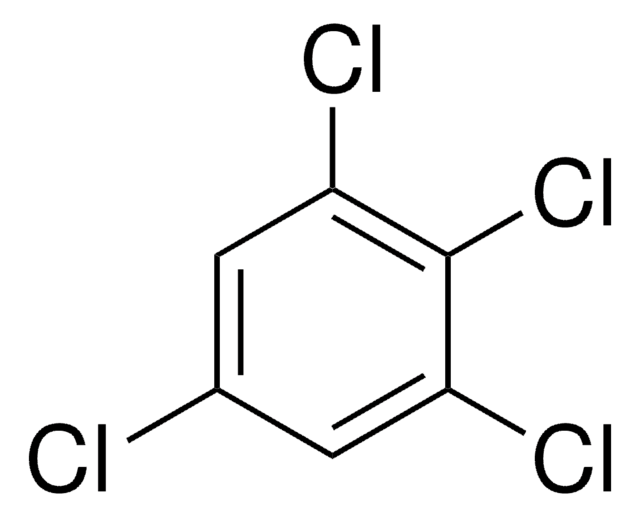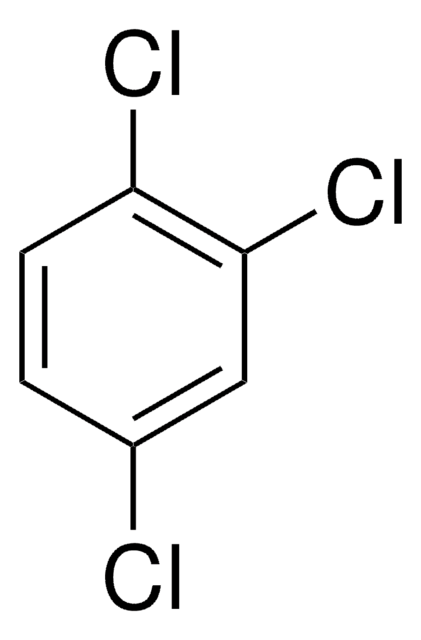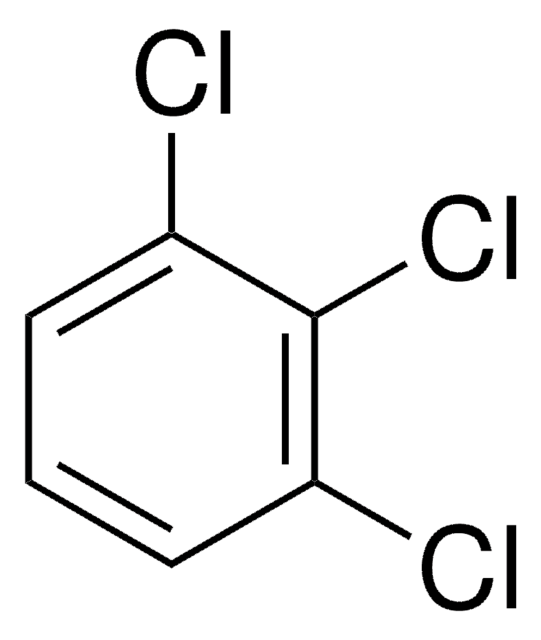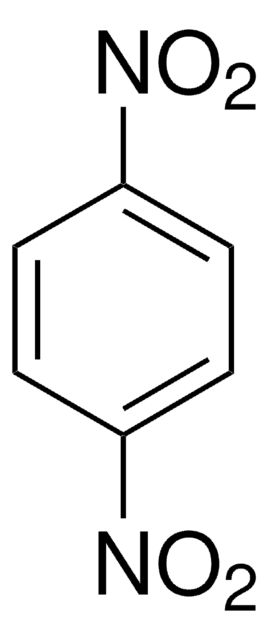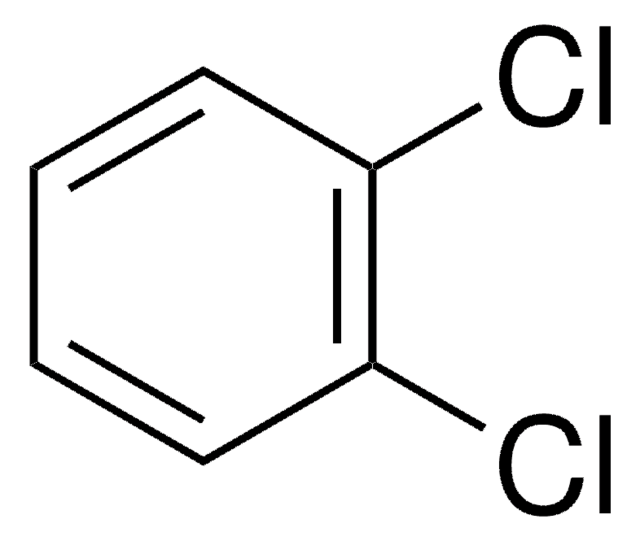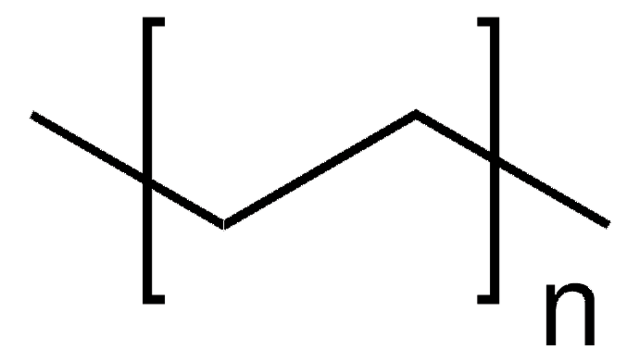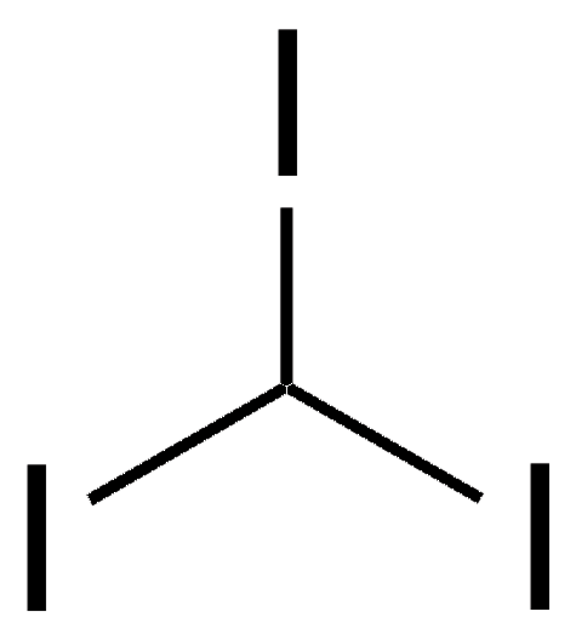131849
1,2,3,4-Tetrachlorobenzene
98%
Iniciar sesiónpara Ver la Fijación de precios por contrato y de la organización
About This Item
Fórmula empírica (notación de Hill):
C6H2Cl4
Número de CAS:
Peso molecular:
215.89
Beilstein/REAXYS Number:
1910025
EC Number:
MDL number:
UNSPSC Code:
12352100
PubChem Substance ID:
NACRES:
NA.22
Productos recomendados
assay
98%
form
chunks
bp
254 °C/761 mmHg (lit.)
mp
42-47 °C (lit.)
functional group
chloro
SMILES string
Clc1ccc(Cl)c(Cl)c1Cl
InChI
1S/C6H2Cl4/c7-3-1-2-4(8)6(10)5(3)9/h1-2H
InChI key
GBDZXPJXOMHESU-UHFFFAOYSA-N
¿Está buscando productos similares? Visita Guía de comparación de productos
Categorías relacionadas
Application
1,2,3,4-tetrachlorobenzene was used as a model compound to determine the chlorobenzenes (CBs) in soil samples. It was also used for rapid dechlorination of 1,2,3,4-tetrachlorodibenzo-p-dioxin (1,2,3,4-TeCDD).
signalword
Warning
hcodes
Hazard Classifications
Acute Tox. 4 Oral - Aquatic Acute 1 - Aquatic Chronic 1
Storage Class
11 - Combustible Solids
wgk_germany
WGK 3
flash_point_f
235.4 °F - closed cup
flash_point_c
113 °C - closed cup
ppe
dust mask type N95 (US), Eyeshields, Gloves
Elija entre una de las versiones más recientes:
¿Ya tiene este producto?
Encuentre la documentación para los productos que ha comprado recientemente en la Biblioteca de documentos.
Young-Beom Ahn et al.
FEMS microbiology ecology, 66(2), 271-281 (2008-07-22)
Dechlorination of spiked 1,2,3,4-tetrachlorodibenzo-p-dioxin (1,2,3,4-TeCDD) was investigated in sediment microcosms from three polychlorinated dibenzo-p-dioxin and dibenzofuran (CDD/F)-contaminated sites: River Kymijoki, Finland; Gulf Island Pond, Maine; and Lake Roosevelt, Washington. Dechlorination was stimulated by addition of electron donor and halogenated priming
Li Wang et al.
Journal of chromatography. A, 1256, 9-14 (2012-08-15)
A novel and simple analytical method for the determination of chlorobenzenes (CBs) in soil samples was developed using ultrasonic-assisted water extraction (UAWE) coupled with solvent bar microextraction (SBME). Four chlorobenzenes, 1,2,3-trichlorobenzene (1,2,3-TCB), 1,2,3,4-tetrachlorobenzene (1,2,3,4-TeCB), hexachlorobenzene (HCB), and 1-chloro-4-nitrobenzene (1-C-4-NB), were
Ken G Drouillard et al.
Bulletin of environmental contamination and toxicology, 93(5), 561-566 (2014-06-18)
A vial equilibration technique was used to estimate the fugacity capacities of food and feces samples for 1,2,3,4-tetrachlorobenzene (TCB). The method was calibrated using different volumes of n-octanol and by comparing the measured and predicted fugacity capacity (Zoct) of n-octanol
Kenichiro Inoue et al.
Environmental science & technology, 39(15), 5844-5850 (2005-08-30)
Carbonaceous adsorbents such as activated carbon have been used to reduce the emission of organic pollutants from incineration plants. However, with this method, the amount and type of adsorbent to be used are based only on empirical results, which may
B A Kimball et al.
Journal of wildlife diseases, 32(3), 505-511 (1996-07-01)
Pentachlorobenzene (PeCB) and 1,2,3,4-tetrachlorobenzene (TeCB) were evaluated as oral chemical biomarkers when administered to coyotes (Canis latrans) during the period of 31 January to 10 August 1994. Three coyotes each received 100 mg of PeCB and three received 100 mg
Nuestro equipo de científicos tiene experiencia en todas las áreas de investigación: Ciencias de la vida, Ciencia de los materiales, Síntesis química, Cromatografía, Analítica y muchas otras.
Póngase en contacto con el Servicio técnico